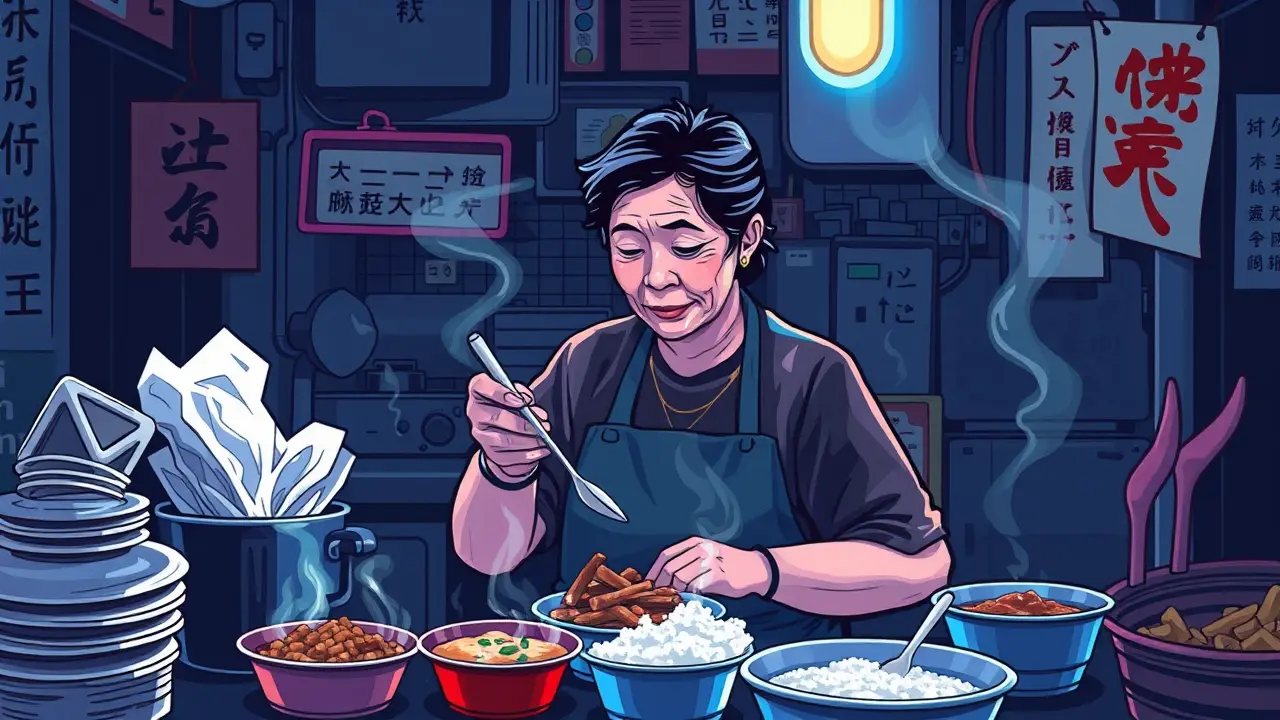
Otherfood & diningRestaurant Openings
Hong Kong's Affordable Two-Dish Rice Shops Face Economic Pressure
LA
Laura Bennett
2 days ago7 min read
The rhythmic clatter of stainless steel serving spoons against aluminum pans provides the lunchtime soundtrack at Hong Kong Family Food, a classic two-dish-rice shop tucked into a Causeway Bay side street where 59-year-old Lo Hung-wan moves with the practiced urgency of someone orchestrating a daily symphony of survival. 'It is very busy during the lunch rush; I won’t even bother to answer the phone during this period,' Lo confesses, her voice a mix of pride and exhaustion as she gestures to the controlled chaos around her.'During those couple of hours, it feels like we are fighting a war. ' This war, however, is not just against the clock; it's a multifaceted battle against soaring rents, inflationary pressures on every ingredient from bok choy to pork, and a shifting urban landscape that increasingly values sleek, digitized convenience over the gritty, personal touch of a neighborhood institution.The two-dish-rice concept itself is a masterpiece of Hong Kong pragmatism and customization, a culinary democracy where office workers, construction laborers, and retirees alike can point to two pre-cooked main dishes from a vibrant, steamy array—perhaps sweet and sour pork, steamed fish with ginger and scallions, or curry beef brisket—piled atop a generous mound of rice, creating a complete, affordable meal often for under HK$40. Yet, this iconic model, which has sustained generations of Hong Kongers, is now facing an existential squeeze that mirrors the broader economic anxieties gripping the city.To understand the pressure, one must first appreciate the delicate ecosystem these shops represent. They are not merely restaurants; they are social anchors, third places for a population perpetually in motion, where the owner knows your usual order and the brief, daily interactions form the fragile web of community in a metropolis of millions.The economic pressures are a relentless tide: a 15% year-on-year increase in wholesale food prices, a commercial rent in a district like Causeway Bay that can devour over 60% of a shop’s revenue, and the suffocating competition from burgeoning food delivery apps that take a crippling 30% commission, forcing these small operators to either absorb the loss or raise prices and risk alienating their core, price-sensitive clientele. I spoke with Professor Simon Lee, an economist at the Chinese University of Hong Kong, who framed it not as a culinary trend but as a socioeconomic indicator.'The two-dish-rice shop is a bellwether for the city's grassroots economy,' he explained, leaning forward over his desk. 'When these shops begin to falter or are replaced by chain stores, it signals a erosion of affordable living space and a homogenization of our urban culture.Their profit margins are razor-thin, often less than 5%, so any external shock—a pandemic, a supply chain disruption, a minimum wage hike—can be fatal. ' This is compounded by a generational challenge; the Los of Hong Kong, who have dedicated their lives to this back-breaking work, are finding few successors.Their children, armed with university degrees, aspire to careers in finance or tech, not 16-hour days spent over bubbling woks. The very human capital required to sustain this tradition is drying up.The consequence is a quiet disappearance. Walk through neighborhoods like Wan Chai or Mong Kok, once dense with these storefronts, and you'll now find gaps filled by international pharmacy chains or bubble tea shops, businesses with higher margins and broader tourist appeal.Each closure is a small death of community memory, a loss of a specific flavor, a familiar face. Yet, within this narrative of decline, there is also remarkable resilience and adaptation.Some shops, like the one run by Lo and her husband, have started offering 'three-dish' options at a slight premium to capture customers wanting more variety. Others are leveraging social media, posting daily specials on WhatsApp or Facebook groups to build a loyal, digital following.There's a nascent movement, supported by local district councils, to create 'hawker-friendly zones' or provide temporary rent relief, acknowledging that preserving these shops is akin to preserving a piece of Hong Kong's soul. The story of Hong Kong's two-dish-rice shops is, therefore, a profound human-interest tale about the tension between progress and preservation, between global economic forces and local identity. It’s about the weight of a takeaway container in your hand, the shared understanding in a nod between server and customer, and the collective, unspoken agreement that this simple, affordable meal represents something far greater than just sustenance—it is a testament to the enduring, hard-won spirit of a city forever fighting its own wars, one lunch rush at a time.
#featured
#Hong Kong
#two-dish rice
#budget meals
#food industry
#small business
#economic pressure
#Causeway Bay
Stay Informed. Act Smarter.
Get weekly highlights, major headlines, and expert insights — then put your knowledge to work in our live prediction markets.
© 2025 Outpoll Service LTD. All rights reserved.